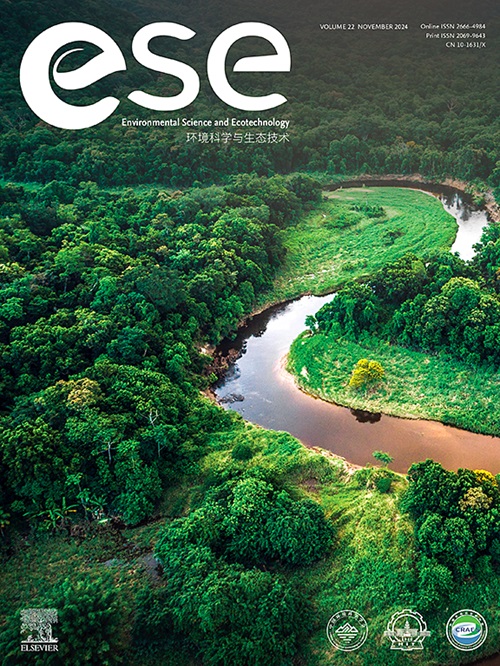Shifting regional development scenarios amplify legacy phosphorus threats to water quality
IF 14.3
1区 环境科学与生态学
Q1 ENVIRONMENTAL SCIENCES
引用次数: 0
Abstract
Legacy phosphorus, accumulated from past anthropogenic activities, poses persistent and complex threats to global water quality. Despite extensive efforts to control phosphorus inputs, legacy phosphorus can persist for decades and undermine restoration goals. Emerging evidence suggests that shifts in regional development patterns profoundly reshape the dynamics and environmental risks of legacy phosphorus accumulation and mobilization. However, the mechanisms by which development pattern shifts reshape legacy phosphorus trajectories remain poorly understood. Here we show the complex pathways linking development-driven land-use changes, biogeochemical buffering capacities, and legacy phosphorus mobilization through an integrative modeling framework that couples developmental shift coefficients, anthropogenic phosphorus inventories, and riverine time-lag modeling to diagnose and predict long-term legacy phosphorus risks. Using the Songhua River as a case study, our results reveal that shifts from industrial to agricultural dominance significantly amplify legacy phosphorus accumulation by 86 times. Consequently, legacy phosphorus accounts for 65.4 %–69.9 %, surpassing current-year inputs and becoming the primary driver of riverine pollution. Furthermore, we demonstrate that development shifts systematically alter the dominant controlling factors, from fossil fuel emissions and drainage infrastructure to soil retention characteristics and agricultural practices, reshaping mitigation priorities. Our framework provides a generalizable methodology for quantifying legacy phosphorus risks under dynamic development patterns, offering immediate applications for water quality management. More broadly, this framework offers critical insights that can guide sustainable management strategies for linking evolving regional development patterns with long-term ecological restoration.

不断变化的区域发展情景放大了遗留的磷对水质的威胁
过去人类活动积累的遗留磷对全球水质构成持续和复杂的威胁。尽管采取了广泛的努力来控制磷的投入,但遗留的磷可以持续数十年,并破坏恢复目标。新出现的证据表明,区域发展模式的转变深刻地重塑了遗留磷积累和动员的动态和环境风险。然而,发展模式转变重塑遗留磷轨迹的机制仍然知之甚少。在这里,我们通过一个综合建模框架,结合发展转移系数、人为磷库存和河流时滞模型,展示了连接发展驱动的土地利用变化、生物地球化学缓冲能力和遗留磷动员的复杂途径,以诊断和预测长期遗留磷风险。以松花江为例,我们的研究结果表明,从工业到农业主导的转变显著增加了86倍的遗产磷积累。因此,遗留磷占65.4% - 69.9%,超过当年投入,成为河流污染的主要驱动因素。此外,我们证明,发展转变系统地改变了主要控制因素,从化石燃料排放和排水基础设施到土壤保持特征和农业实践,重塑了缓解优先事项。我们的框架为动态发展模式下的遗留磷风险量化提供了一种通用的方法,为水质管理提供了直接的应用。更广泛地说,这一框架提供了重要的见解,可以指导可持续管理战略,将不断变化的区域发展模式与长期生态恢复联系起来。
本文章由计算机程序翻译,如有差异,请以英文原文为准。
求助全文
约1分钟内获得全文
求助全文
来源期刊

Environmental Science and Ecotechnology
Multiple-
CiteScore
20.40
自引率
6.30%
发文量
11
审稿时长
18 days
期刊介绍:
Environmental Science & Ecotechnology (ESE) is an international, open-access journal publishing original research in environmental science, engineering, ecotechnology, and related fields. Authors publishing in ESE can immediately, permanently, and freely share their work. They have license options and retain copyright. Published by Elsevier, ESE is co-organized by the Chinese Society for Environmental Sciences, Harbin Institute of Technology, and the Chinese Research Academy of Environmental Sciences, under the supervision of the China Association for Science and Technology.
 求助内容:
求助内容: 应助结果提醒方式:
应助结果提醒方式:


